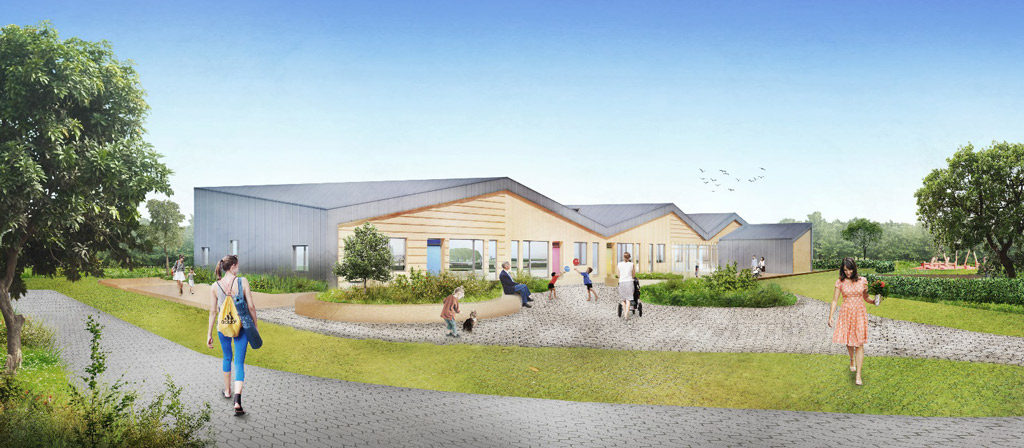Integrated Nursery Centre in Namysłów

The plot for the investment gave us opportunity to freely shape the building. The energy and functional analyzes showed us that the optimal shape for the daycare is a compact block that has its longer façade facing south. This allowed us to have all class units lit by southern light. This resulted in a compact block shape of the nursery. The classes have been additionally lit by the warm roof windows that incorporated other sun directions into the classes at other times of the day. The design phase has been supplemented with daylight analyses to ensure proper window placement. The hybrid ventilation is created by merging the functions of mechanical HR ventilation supplemented with natural ventilation and thereby the indoor thermal comfort level during hot periods. The air quality in all main rooms is controlled when occupied and the ventilation is optimized to keep the CO2 level and humidity low resulting in a very high indoor comfort levels.

The focus of the energy design was to create a Passive House basis for further development of Active House practices. This means that the first step was to significantly reduce the heat loses – the insulation has been designed to be very efficient, airtight and thermal bridge free. The shape of the building is compact, and a ventilation with heat recovery is used. The southern orientation of the building supplies it with a lot of passive solar gains. This resulted in achieving very low energy use. Heating related energy need has been calculated to be on a passive house level (15kWh/m2). The water use has been reduced with various strategies (aerators, grey water reuse). The next step has been to use heat pumps to further reduce the energy use impact on the environment. The overall energy use is estimated at 26kWh/m2.

The building’s structure has been designed out of wooden prefabricated elements – which reduces the CO2 footprint of the building both in terms of construction and in terms of Lifecycle energy use – the wooden elements minimize thermal bridges. The outer surface is based on a wooden structure that are ventilated and protected from direct rain, reducing the need for surface treatment. In order to reduce the use of water a structure for use of rain water for gardening has been established, and aerators have been installed in the toilets.



